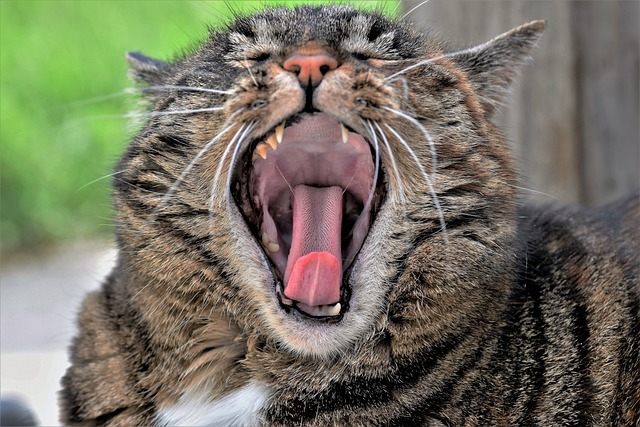Cats have long been celebrated for their remarkable agility and flexibility, and one of the most astonishing displays of their physical prowess is their ability to effortlessly slip through seemingly impossibly small spaces. Whether it’s a partially opened door, a narrow gap between furniture, or a tight corner, cats have a knack for navigating through spaces that leave us humans marveling. Let’s explore the fascinating anatomy and behaviors that enable cats to accomplish this seemingly magical feat.
- Incredible Bone Structure:At the core of a cat’s ability to squeeze through small spaces is its extraordinary bone structure. Cats have a highly flexible spine, featuring more vertebrae than humans. This increased number of vertebrae allows for enhanced spinal flexibility, enabling cats to twist and turn their bodies with remarkable ease.The lack of a collarbone further contributes to their flexibility. Unlike humans, cats’ shoulder blades are not attached by a bony connection to the rest of the skeleton, allowing their shoulders to collapse inward. This anatomical adaptation provides cats with the ability to compress their bodies, fitting through tight spaces without impediment.
- Muscle Control and Contraction:Cats possess powerful and well-developed muscles, particularly in their shoulders and back. This muscular strength, combined with an extraordinary degree of muscle control, allows them to execute precise movements. When confronted with a narrow opening, cats can contract and elongate their bodies strategically, redistributing their mass to ease through the tightest of spaces.The cat’s musculature also plays a crucial role in their ability to retract and protract their claws, further aiding them in gripping surfaces and propelling themselves through confined areas.
- Size Estimation:Cats are expert judges of size, and they have an innate ability to assess whether they can fit through a particular space. This skill is honed through their experiences and explorations from a young age. Kittens, in particular, learn about their own size and dimensions as they play, climb, and explore various environments. This knowledge becomes an integral part of their spatial awareness, helping them gauge whether they can successfully negotiate tight spots.
- Whiskers as Sensors:Whiskers, or vibrissae, are highly sensitive tactile hairs located on a cat’s face. While whiskers are often associated with a cat’s ability to navigate in the dark, they also serve as excellent sensors for assessing the width of openings. When a cat approaches a narrow passage, its whiskers will instinctively move forward, providing crucial feedback about the width of the gap. This tactile information helps the cat make split-second decisions about whether to proceed or retreat.
- Instinctual Behaviors:Cats are natural hunters and explorers, and their instinctual behaviors are finely tuned to ensure survival. The ability to squeeze through small spaces is an adaptive trait that serves multiple purposes. In the wild, cats may need to pursue prey into narrow crevices or escape from predators by slipping through tight spots. Domestic cats retain these instincts, and the drive to explore their surroundings is deeply ingrained.Additionally, cats are crepuscular creatures, meaning they are most active during the dawn and dusk. The ability to navigate through small spaces allows them to move stealthily and explore their environment with agility, whether it’s inside the home or in the great outdoors.
In the world of feline agility, the art of squeezing through small spaces stands out as a testament to the remarkable adaptations and behaviors of these enigmatic creatures. From their flexible bone structure and powerful muscles to their keen spatial awareness and sensitive whiskers, every aspect of a cat’s anatomy plays a role in this extraordinary ability. As cat owners, we can’t help but marvel at the seemingly physics-defying maneuvers our feline friends effortlessly execute as they gracefully slip through spaces that appear too small for any living being.



